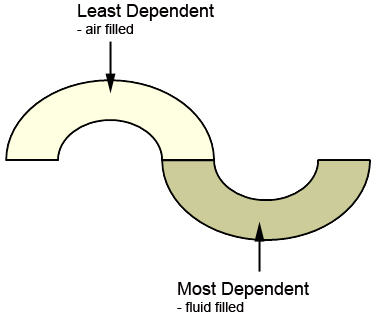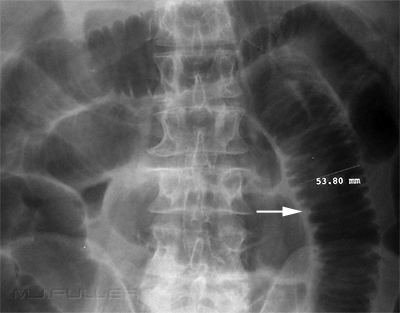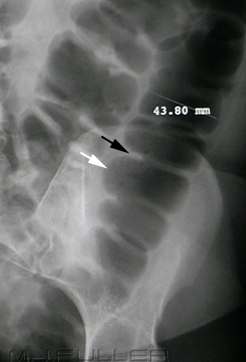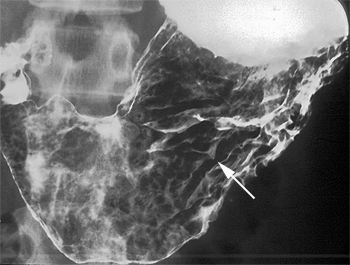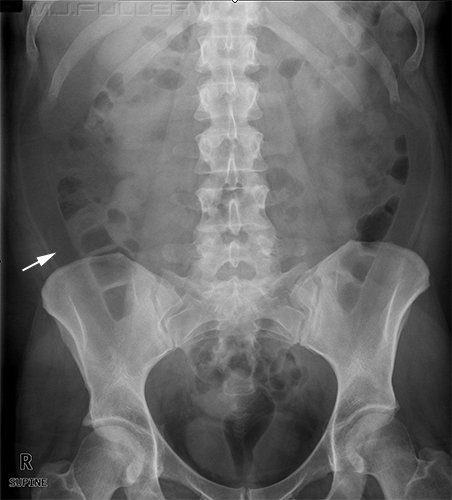The Abdominal Plain Film- Terminology
Jump to navigation
Jump to search
Terminology
Introduction
There are a number of terms that are used frequently in reference to the abdominal plain film. These terms are defined below.
Terminology
....back to the Applied Radiography home pageThe Abdominal Plain Film
This is an outdated term that referred to a supine abdominal radiograph. It predates digital radiography but is still used by some radiographers today.
Acute Abdomen
A patient who has acute abdominal symptoms
FulminantDeveloping or progressing suddenly, severely or rapidly
Inactive
Dependent
EffaceWipe out, destroy, obliterate
IleusThe term ileus appears to have undergone a subtle change in meaning/usage. The term Ileus originally was used to denote stasis of bowel contents. The term had two common uses
- Adynamic Ileus ( syn paralytic ileus, non-obstructive ileus)
- This referred to non-functioning bowel for reasons other than obstruction
- Obstructive Ileus
- This referred to stasis of bowel contents for reasons related to obstruction
It appears, for reasons of economy, the terms where abridged as followsAdynamic Ileus ----------> was shortened to ----------> Ileus
Obstructive Ileus----------> was shortened to ----------> obstruction
Thus, with its current meanings, you will hear a clinician ask a radiologist whether he/she thinks a patient has ileus or obstruction. To make matters even more complicated, some countries still use the original meanings of these two terms. Some radiologists avoid the issue by describing an appearance as demonstrating a "motility disorder". The term 'motility disorder' does not distinguish between ileus and obstruction.
Motility Disorder
This term refers to abnormal motility of bowel contents without specifying whether it is obstructive or non-obstructive in nature.
Valvulae Conniventes
The small bowel has a wall pattern that is known as valvulae conniventes (white arrow). The muscular bands encircling the small bowel are usually seen to traverse the bowel wall at right angles to the long axis of the bowel
Plicae Semilunaris and Haustra
The large bowel wall features pouches or sacculation that protrude into the lumen that are known as haustra(black arrow). You will hear radiologists refer to the bowel's "haustral pattern". In between the haustra are spaces known as plicae semilunaris- white arrow (semilunaris refers to their semi-lunar shape)
Stomach Rugae
The mucosal folds of the stomach are known as rugae(arrowed). These are often seen on abdominal plain film and are sufficiently characteristic to confidently distinguish the stomach from the other hollow viscus
Abdominal Viscus
Abdominal Viscus
Solid
Hollow
- liver
- spleen
- pancreas
- kidneys
- ovaries
- stomach
- small intestine
- large intestine
- gall bladder
- urinary bladder
- uterus
The abdominal viscus refers to the abdominal organs. These can be divided into solid viscus and hollow viscus
